Does your marketing live in fear? When you think about all of the big changes constantly happening in the industry, from AI to the economy to the collapse of the funnel, does your stomach clench with anxiety?
It doesn’t have to be like that.
You can’t let your fear control your marketing; that leaves you in a reactive position and open to a lot of pain. It’s time to build a more resilient strategy that will drive real, long-term results and tangible business impact instead of only focusing on what’s working right now and failing to get ahead of what’s to come.
So let’s talk about how to build a marketing strategy that’s ready to take on any monster.
Shine a lasting light with brand marketing and avoid over-investing in the bottom funnel
When it comes to budget, we all need to prove marketing’s worth to the C-suite, and that usually means delivering a powerful return on investment (ROI) that’ll make shareholders happy. That leads many marketers down a problematic path: focusing on bottom-funnel tactics that directly drive conversions.
But what looks good in the short term could be setting your brand up for failure in the long term. To win, you need a full-funnel strategy that is built to grow your business at the same time as capitalizing on opportunities to convert. And that means you need to invest in brand marketing.
Upper-funnel strategies will bring new potential customers into your brand’s orbit, so you have a bigger pool to convert. It also primes audiences before they get to the conversion stage so lower-funnel campaigns are more effective and efficient.

Of course, that can be easier said than done; to make any of this happen, you need to get executive buy-in first. Luckily, there are ways to measure and prove the value of the elusive upper funnel to leadership. You just need to know how.
Start by creating an accountability framework that aligns your brand strategy with business objectives. Clearly define your overall objectives and the KPIs you’ll need to quantify them, then set up a measurement framework and tools to get the metrics you need. Then, create a timeline for your measurement, setting up a weekly, monthly, and quarterly frequency based on how much data you’ll need to take action.
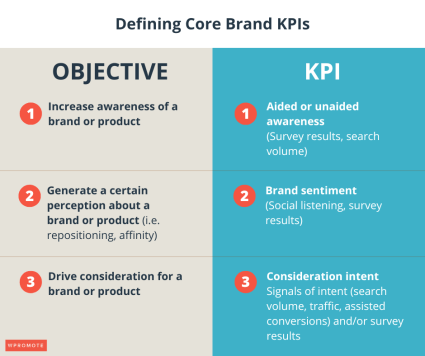
Since measuring brand marketing is a little more complicated than measuring performance marketing, you’ll likely need to spend some time and effort on internal education. But once leadership understands what to expect and what success looks like, you’ll be well on your way to proving the impact of your full-funnel marketing efforts. That’ll get you more budget and better results over time.
If you still aren’t ready to go all in on measuring brand impact just yet, you can also start small by testing geo-targeted brand activations in channels like CTV or premium social platforms. By niching down to test marketing strategy in just one channel in a restricted geographic area, you can prove results definitively for a much smaller up-front investment.
Unlock new opportunities by letting go of some creative control (especially on social)
Many brands are scared to take risks in marketing, whether that’s dipping a toe in a new social platform or testing a new AI tool. That’s especially true about creative; marketers are afraid to relinquish control over any aspect of their branding because they’re worried it will damage the company’s image.
If you’re still going over every piece of your creative in detail, all you’re doing is foregoing opportunities in the name of risk mitigation.
We get it, letting go is scary. But holding onto control at the expense of creativity keeps your marketing in a rut. Creative today trends toward the organic and authentic, especially on social media, where ideas move fast. And flexibility is more important than ever when new AI campaigns can test different combinations of creative faster than any person could—especially since they use creative for targeting.
Whether you’re ready or not, a new era of creative is here. Your old playbook won’t work, so it’s time to start trying new things. Your team should start by optimizing your approach to and maximizing creative inputs for Google’s PMax and Meta’s Advantage+ AI-powered campaigns to make sure you’re getting the best results out of those powerful new tools.
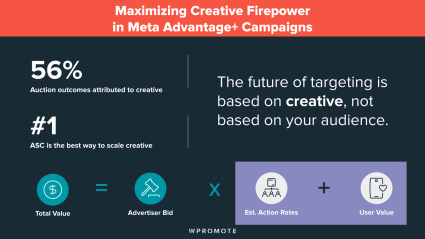
You can also start loosening up your creative by bringing in new voices and working with influencers that are aligned with your target audience. Again, giving up control is the name of the game: those partnerships work best when you let the influencers choose how to incorporate your brand into their content, since they know their audience well and already have an authentic connection with your potential customers.
By letting influencers use their real voices in sponsored content with your brand, you can harness some of the power of word-of-mouth marketing.

Source: Semrush
Your team should also be putting at least 10% of your budget toward testing. Put together a framework and testing agenda that will help you understand what new types of imagery, copy, and content will resonate with your audience.
Once you’ve run a test, compile your results and carefully analyze them with your team. You’ve already defined success or failure during the testing process, but you should also keep an eye out for any secondary learnings you can get from the experiment.
Don’t cut marketing budgets to protect today’s profits and hurt your business tomorrow
When the economic climate is looking cloudy, a lot of brands start hunting for places to cut spend–and marketing budgets are often on the chopping block. While you might be tempted to try to spend less when you’re facing uncertain returns, unhappy shareholders, and executive pressure, cutting your budget today is only going to hurt you tomorrow.
In fact, there’s evidence that you might see benefits from spending more on your marketing during a recession or other economic event. According to McGraw-Hill Research’s analysis of 600 companies before, during, and after the 1981-1982 recession, sales of companies that aggressively advertised during the recession rose 256% just three years later over businesses that didn’t keep up their advertising during the tough times.
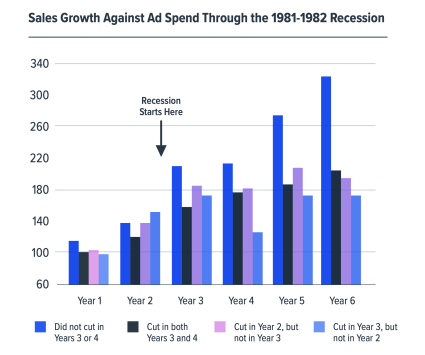
Source: McGraw-Hill Research
During a recession, a lot of your competition will stop or slow marketing spend, which gives you an opportunity if you’re willing to stay the course. You can do the same marketing at a lower cost because of decreased competition. Plus, if nobody else is marketing, you’re essentially running in an election uncontested. Your customers’ eyes will be on you by default.
Of course, once you have the floor, you need to use your podium the right way. During tough times, it’s especially important to show your customers that you care about them.
Coca-Cola’s 2020 ads are a good example of this: by showcasing frontline workers, they addressed the difficult circumstances but also reminded their audience that they could still buy Coke, even when everything else seemed out of control. In a recession, your creative should show a clear understanding of the challenges your audience faces–and that your brand is there for them through it all.

Source: Coca-Cola
Get ahead of data deprecation instead of trying to do the same thing that worked in the past
The writing’s on the wall: the era of third-party data gathered through cookies is at an end. But even though we all know by now that new data regulations are here (and more are coming), many brands are hesitant to adapt to a first-party data strategy.
It’s easy to see why. A lot of marketers are scared of switching to entirely new methods of collecting and analyzing customer data. It’s a big leap from relying on easy-to-gather data from cookies to asking customers to give up their information voluntarily. Plus, privacy-compliant solutions like data clean rooms can be tough and time-consuming to set up.
But even the most reluctant scaredy-cats have to make the switch sooner or later. The cookie has crumbled, and it’s time to get on board with new methods of data collection before your team faces a datapocalypse.
To get started, you need to set up a strategy for gathering zero-party and first-party data from your customers. Depending on your business, there are lots of ways to ask for and receive consumer data. You can incentivize your audience to share their information in exchange for benefits like personalized experiences, extra content, or special discounts.
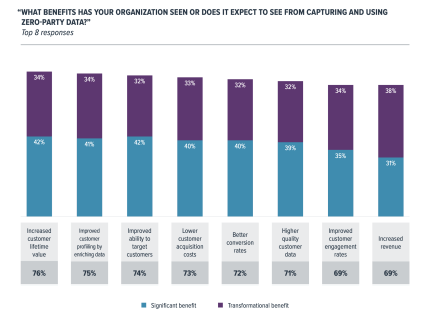
Source: Forrester
You should also start testing new privacy-preserving techniques like data clean rooms and data collaboration platforms before data privacy compliance becomes a requirement in the US.






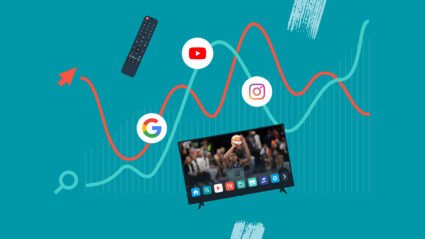
Responses